Garden of the dinosaurs: Hartman Prehistoric Garden
Want to see the original native plants of central Texas? Take a stroll through Hartman Prehistoric Garden at Austin’s Zilker Botanical Garden. Designed to resemble a landscape that dinosaurs would have roamed, Hartman represents the late Cretaceous period (which ended 65 million years ago), when the shallow sea that covered Texas began to recede and flowering plants evolved, adding diversity to Jurassic-era, spore-producing plants like horsetail and ferns.
Hartman opened in 2002, and our family visited on opening day. Since then I’ve watched it grow, and I currently consider it the best garden at Zilker. While the other gardens, including the beloved Taniguchi Japanese Garden, languish without much-needed maintenance, Hartman appears to be well maintained and looked great during my late-October visit.
The garden was built to preserve and commemorate dinosaur tracks and an ancient turtle fossil found on the site in 1992. After casts were made of the tracks and fossil, they were re-buried to prevent deterioration due to exposure. Austinites Claudette and David Hartman were instrumental in the garden’s creation. Read Linda Lehmusvirta’s informative article “Where the Wild Things Were” for more on its history.
In the 2-acre garden, a pond stands in for the long-lost shallow sea, the existence of which is evident in the ammonite-fossiled limestone that today forms Austin’s bedrock. Perched on an island in the pond is…
…a life-size bronze of an ornithomimus, the dinosaur whose three-toed tracks were discovered here. Lotus leaves nearly obscure the water at this time of year. I’m making a mental note to visit next summer to see them in bloom.
Against a backdrop of palms, cypress, and cycads, the dinosaur makes a surprising and fun focal point.
Cast ammonites adorn a decomposed-granite path that leads to the pond.
The lushly planted garden holds other surprises, like this lovely orchid vine (Bauhinia yunnanensis).
And flowering ginger
An existing elevation change offered an opportunity to make a natural-looking waterfall. It’s about 15 feet high and spills in a double cascade into a pool.
Jatropha integerrima adds a few spots of red amid a largely evergreen garden.
Under the trees, ferns thrive in feathery splendor.
A canal-like stream runs through the garden, crossed here by a limestone-slab bridge. Texas dwarf palmetto (Sabal minor) shows its jazz hands.
Fern? Cycad?
I love the shape and various hues of green.
Palms and ferns and a dinosaur — a dramatic combo
Almost makes you feel you’ve time traveled, doesn’t it?
Cypresses line a broad decomposed-granite path that winds through the garden, like those that line Hill Country rivers today.
Under the trees, bold foliage rules the day.
Like this enormous sago palm
These are awfully pretty too, like gigantic feather plumes: Ceratozamia kuesteriana (left) and Dioon edule (right).
A closeup of the ceratozamia
A female sago “in bloom.” Sagos, which are primitive plants, don’t actually bloom. Males produce a cone, females a ball-shaped megasporophyll. Pollen from the male is dispersed via wind or insects to pollinate the female.
And we’re back at the entrance to admire a large, potted queen sago (Cycas rumphii).
Hartman Prehistoric Garden is an unusual and fascinating garden. Take a trip back in time and see it for yourself, or simply click for my earlier posts:
Hartman Prehistoric Garden is cycad-delic, March 2011
Zilker Botanical Garden: Hartman Prehistoric Garden, October 2007
All material © 2006-2015 by Pam Penick for Digging. Unauthorized reproduction prohibited.


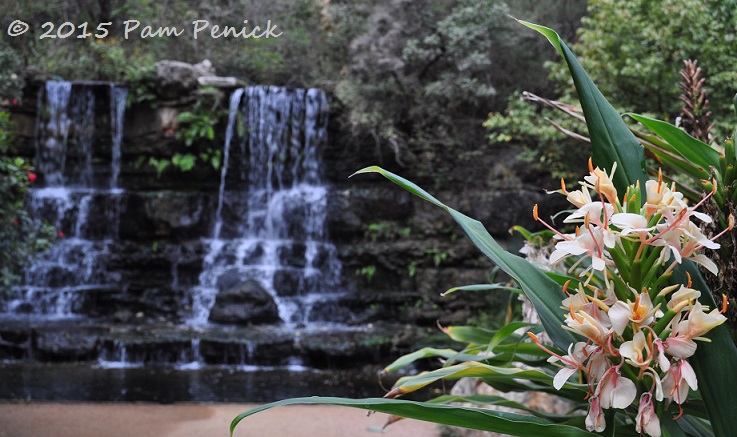
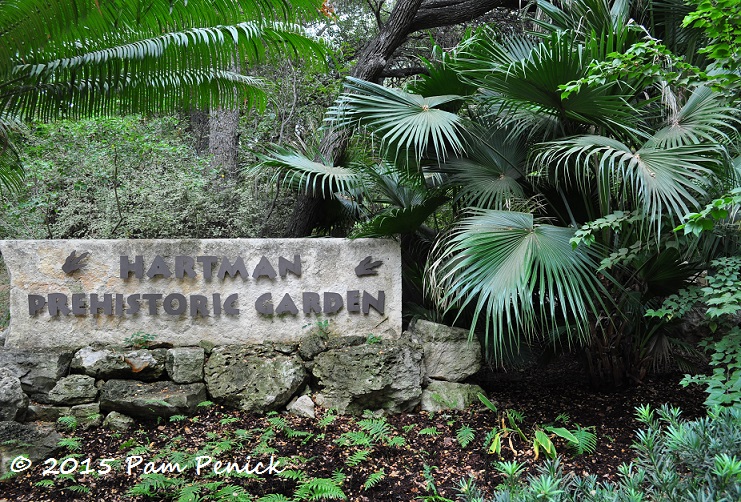
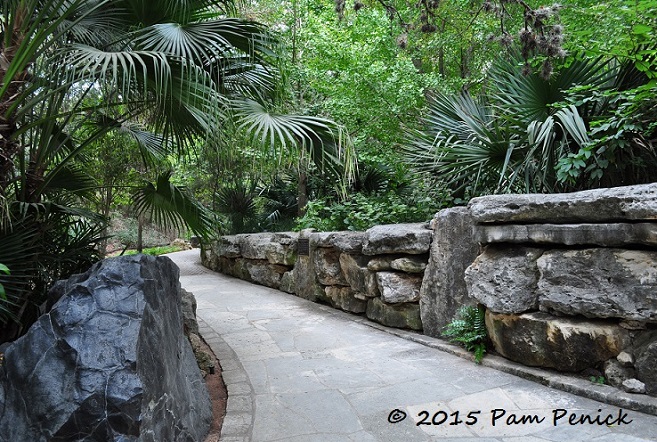
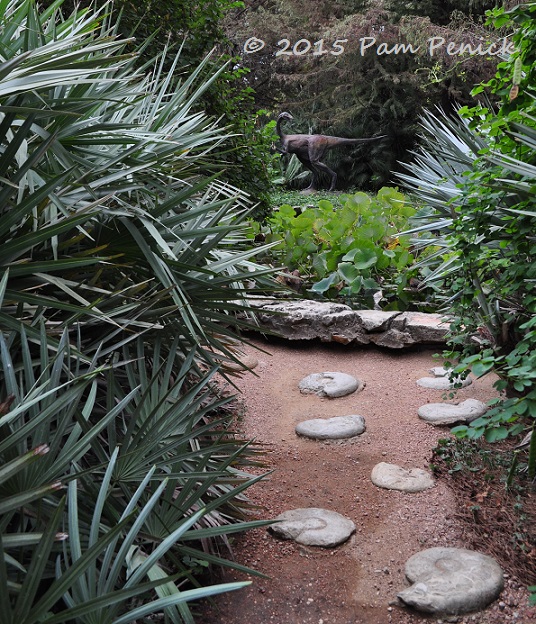
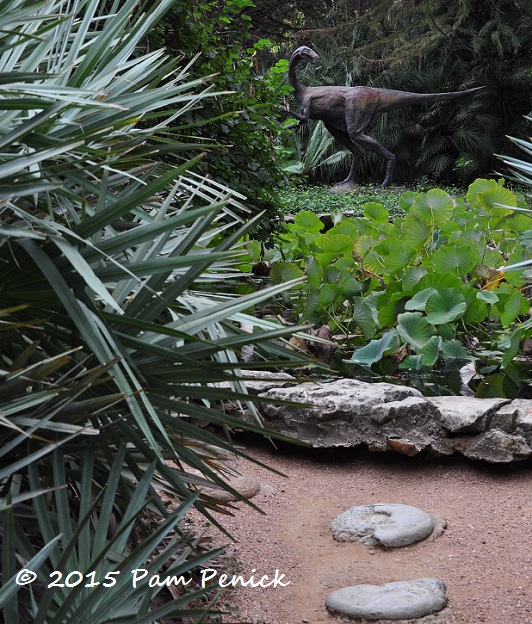
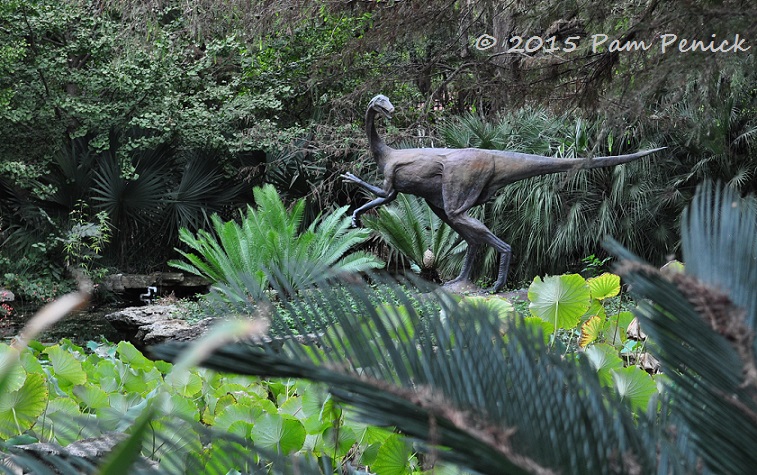
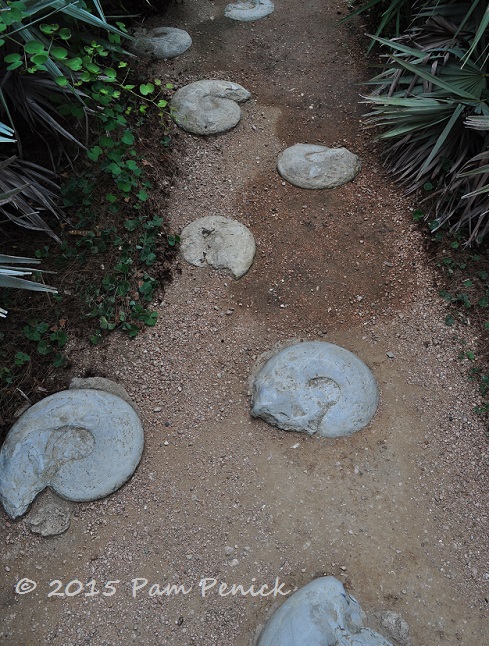
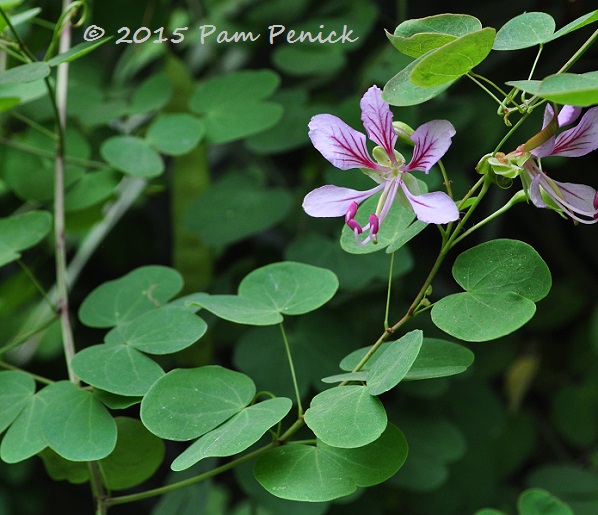
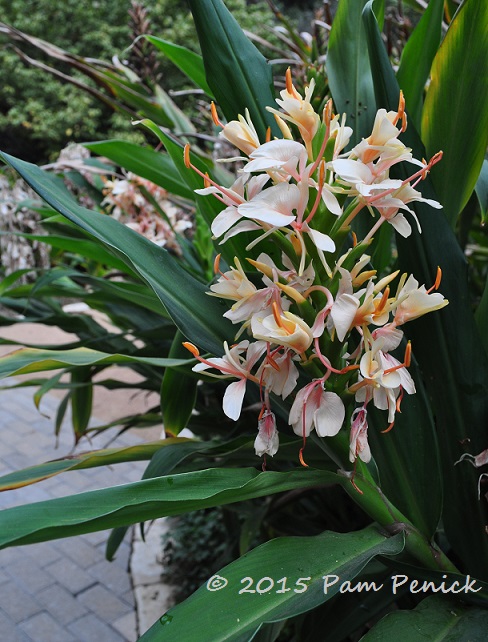
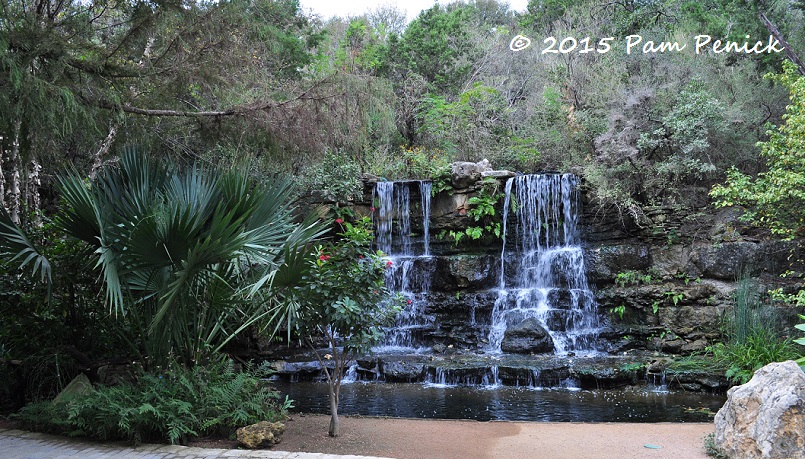
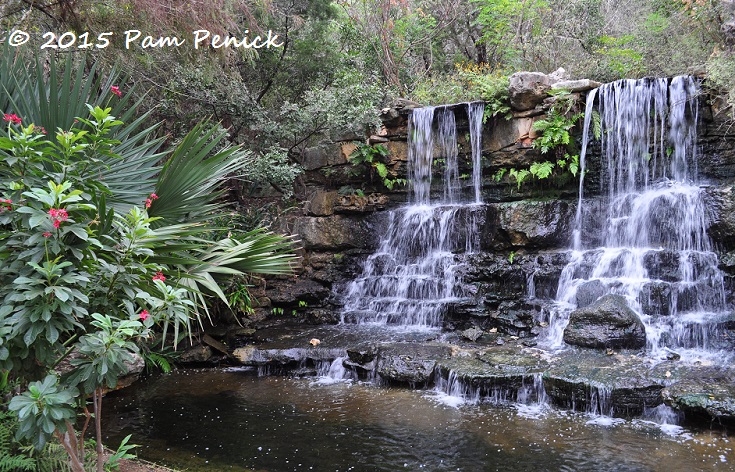
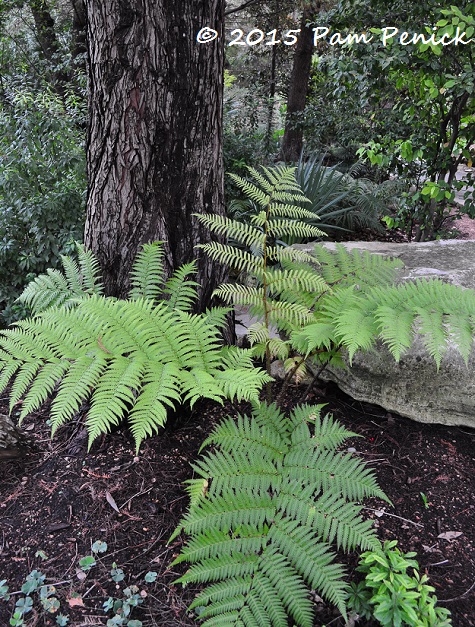
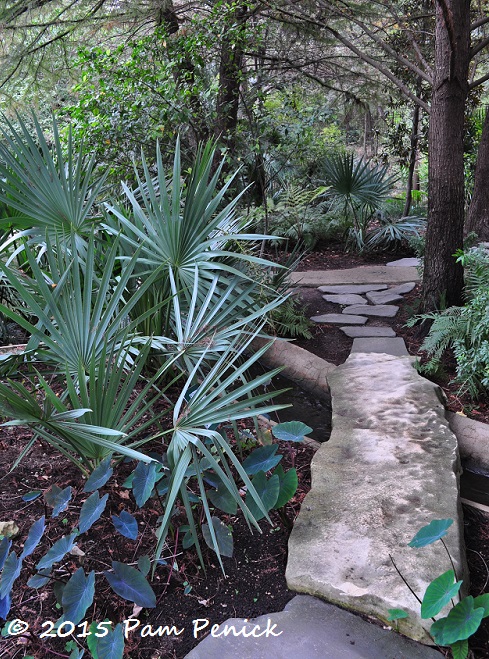
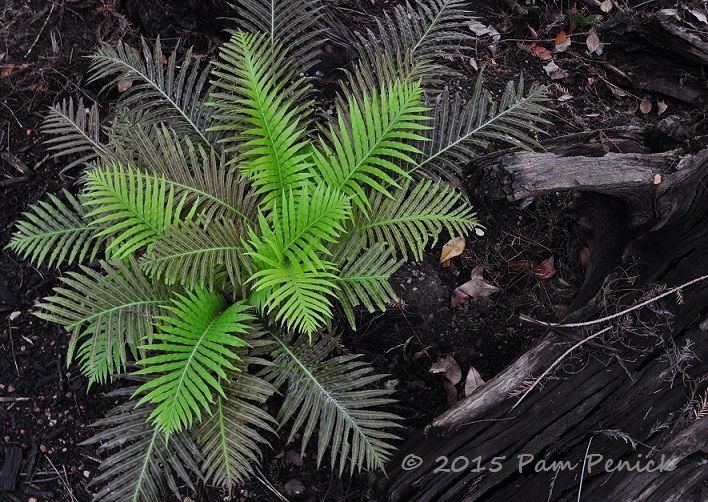
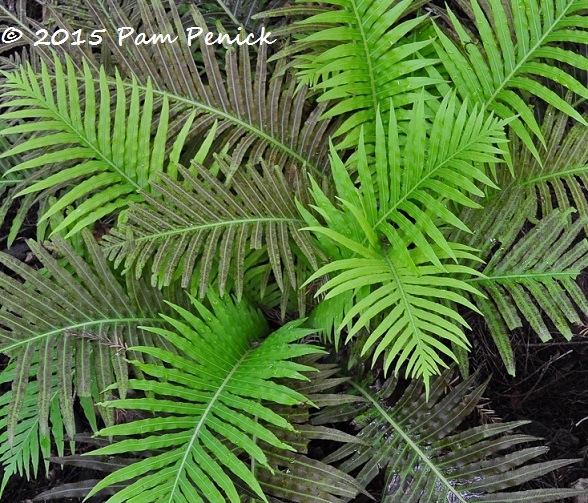
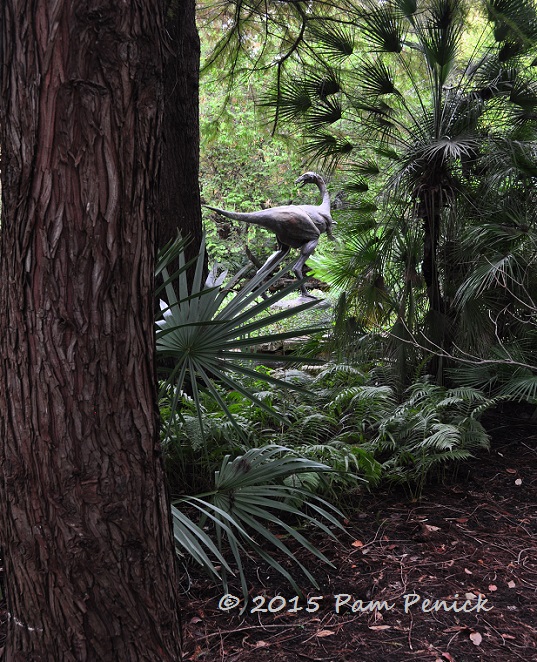
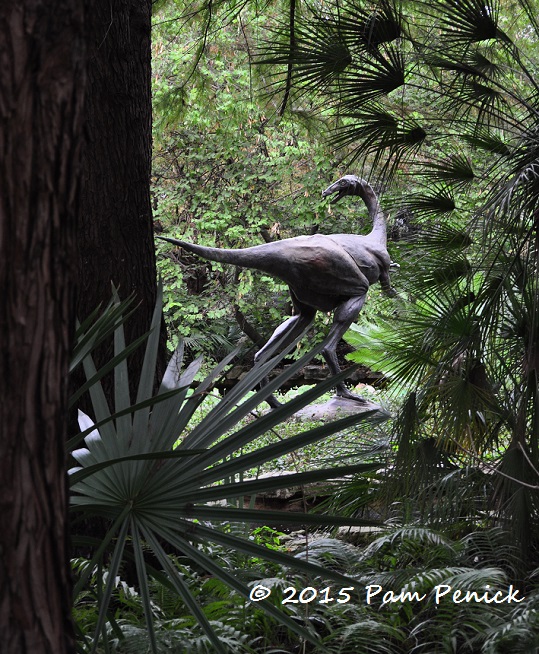
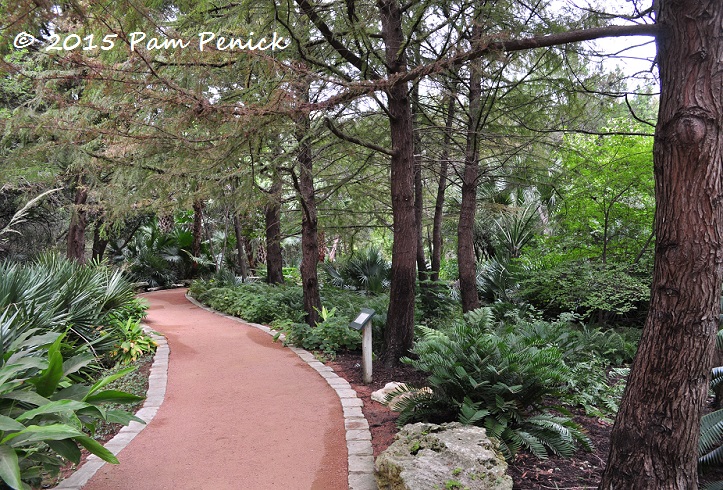
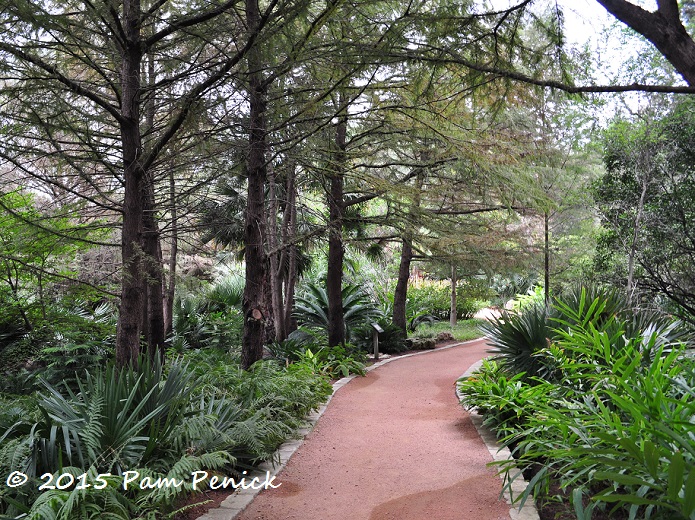
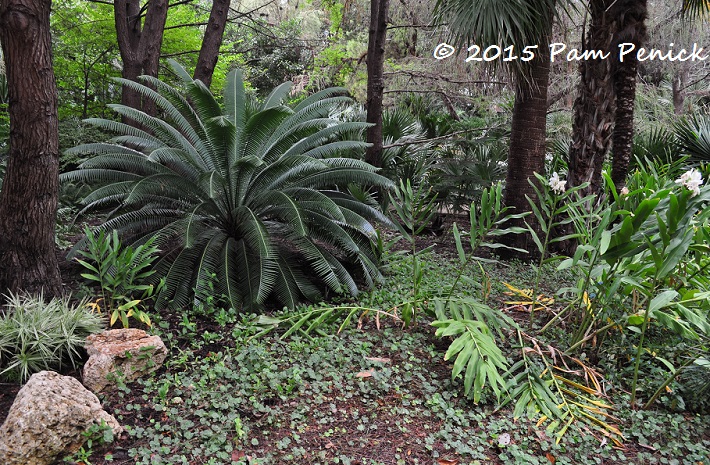
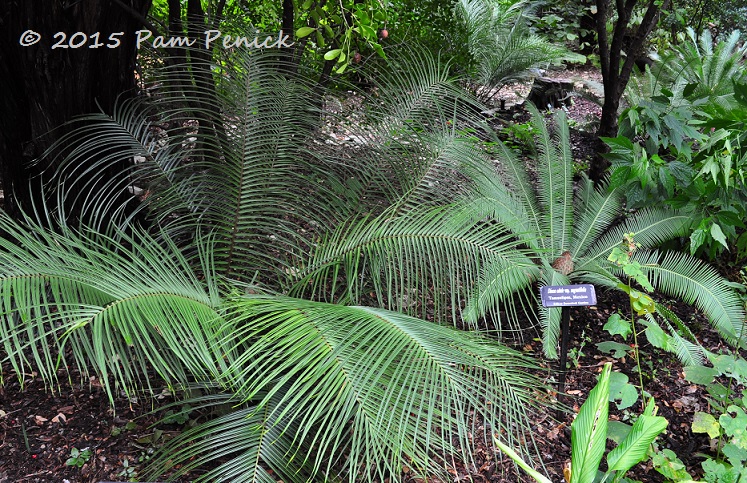
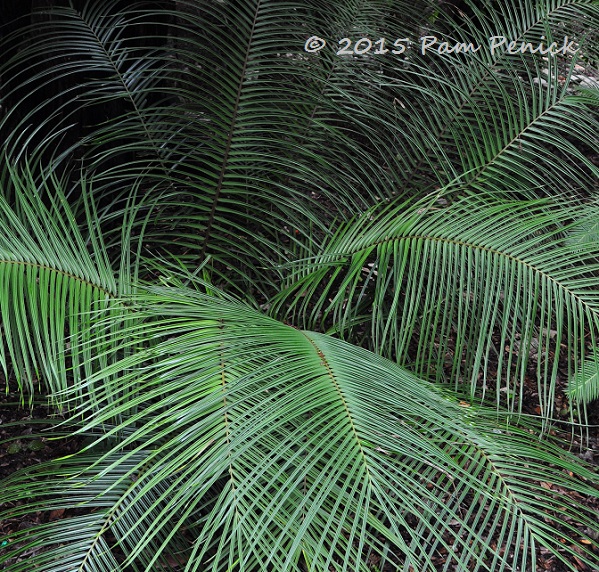
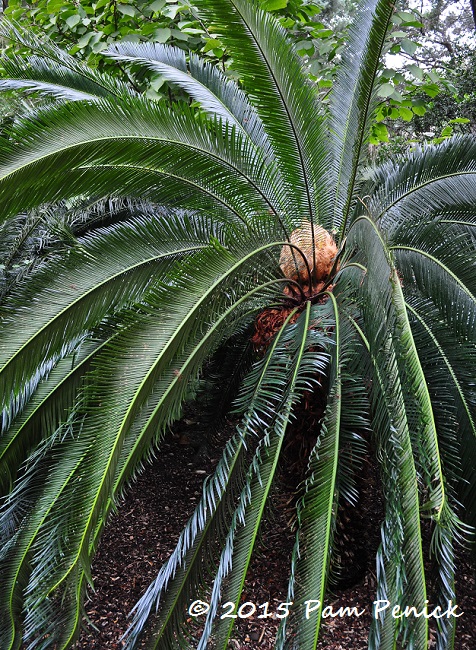
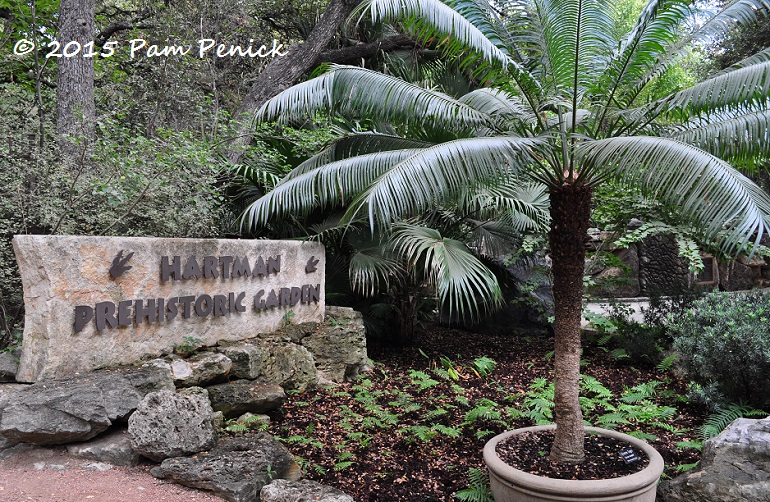
What an awesome idea for a garden! I’ll bet my kids would just love something like that. Very cool!
Yes, it definitely does have plenty of kid appeal with the dino sculpture and tracks appearing in the paths. —Pam
It’s a beautiful – and dramatic – garden. It looks older than 13 years but then I guess that, if you want to great a prehistoric garden, you best start with mature specimens! The dinosaur is wonderful.
The garden has actually grown a LOT since it was planted, Kris. And I bet everything grew like gangbusters with all the rain we’ve had this year. —Pam
Thanks for the shout-out on my long-ago story. The AH&L featured lots of pictures but it’s not online. We taped it for CTG but it’s probably not online either! Thanks for a great reminder to visit again and see it in maturity!
I thought you’d have all of the old CTGs online, Linda. Perhaps a repeat taping is order? —Pam
Linda, your article for Austin Home & Garden is on the zilkergarden.org site – click on gardens, then click on Hartman Prehistoric Garden, then it’s included in the introductory article.
http://www.zilkergarden.org/gardens/wildthings.html
Nice photo tour of a great looking garden, and it’s obvious that all those cycads love the hot Texas summers, most of these would be soooo much slower growing here in Berkeley.
I think that fern might be the Dwarf Tree Fern Blechnum gibbum, although it seems to look a bit different there in Texas compared to those in my own garden. Can you grow any of those Dioons or Ceratozamias in your garden? Ceratozamia mexicana and the Australian Lepidozamia peroffskyana are two that grow well here even without heat.
Yes, we can grow dioons in Austin, although I haven’t tried it myself. I’d never heard of the ceratozamia until this visit and don’t know whether it varies much from the dioon. I’m guessing similar conditions? Thanks for the stab at the fern ID. —Pam
The Prehistoric Garden also has a very nice gingko tree! I just love the shape of gingko leaves and was inspired to plant one from The Natural Gardener. It struggles during August. Looking forward to its growth.
I looked for a ginkgo I thought I remembered seeing in the Japanese Garden a while ago, but I couldn’t find it. Little did I know there’s one in the Prehistoric Garden, but that makes sense, seeing as it’s an ancient tree. Author Lucinda Hutson has a large one in her front garden. But in general it’s an unusual choice for Austin, isn’t it? —Pam
Wonderful article, Pam! We’re working to get improved funding for maintenance of ZBG, including the Taniguchi Garden.
Thank you, Marion. I know it can’t be easy, but I hope you succeed! ZBG needs some love from the city. Or maybe you have your sights set on alternative funding sources? —Pam
It is sad to hear of once beautiful public gardens struggling for funding and needed maintenance, especially in a town like Austin, where gardens and gardeners abound. Or perhaps that is the reason, people have beautiful spaces to choose from on every hand, so we’ve gotten blasé about the need?
Perhaps before future ACL Fest contracts are written, monies will be earmarked for beefing up the rest of Zilker’s many attractions that entertain visitors the other 50 weekends each year.
The city has for too long neglected Zilker Botanical Garden. I’ve heard various schemes over the years for getting funding, including outsourcing maintenance. I hope something can be figured out and ZBG gets the funding it needs for top-notch gardeners and maintenance staff to bring it back to glory. —Pam